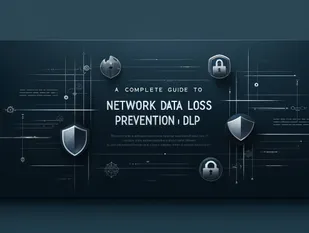
Imagine waking up to find that your application has just crossed the milestone of 1 billion users. 🌟 This massive influx presents a thrilling yet daunting challenge, pushing the boundaries of scalability, performance, and security. How would you tackle this unprecedented growth? Let’s explore how to manage and optimize your application to handle such a colossal user base.
1. Scaling Your Infrastructure: From Handling to Thriving 🌐🔧
-
Dynamic Scalability: Scaling to accommodate a billion users requires a robust infrastructure that can grow with demand. 🌱 Start by implementing auto-scaling solutions that dynamically adjust resources based on traffic. Cloud services like AWS, Azure, or Google Cloud offer auto-scaling features that automatically increase or decrease computing power as needed. This ensures that your application remains responsive even during peak times. ☁️🔄
-
Load Balancing: To distribute incoming traffic evenly across servers, utilize load balancers. 🏋️♂️ This prevents any single server from becoming a bottleneck and ensures optimal performance. Advanced load balancers can intelligently route traffic based on various factors, including server load, user location, and request type. By spreading the load, you maintain high availability and reliability. 🌍💨
-
Microservices Architecture: Transitioning to a microservices architecture can greatly enhance your ability to scale. 🏗️ This approach breaks down your application into smaller, independent services that can be developed, deployed, and scaled separately. By isolating components such as user authentication, data processing, and notifications, you can scale specific parts of your application based on demand, improving overall efficiency and flexibility. 🔍
-
Content Delivery Networks (CDNs): Utilize CDNs to cache and deliver static content, such as images, videos, and scripts, closer to your users. 🌐🖼️ CDNs help reduce latency and speed up load times by distributing content across a global network of servers. This not only improves user experience but also alleviates pressure on your origin servers, allowing them to handle more dynamic requests. 🚀
2. Enhancing Performance: Keeping It Smooth and Fast ⚡💨
-
Database Optimization: Managing data for a billion users requires a highly optimized database setup. 📊 Consider implementing sharding to distribute data across multiple databases, which can improve performance and reduce the risk of single points of failure. Indexing and query optimization are crucial for fast data retrieval, and database replication can enhance read performance and provide fault tolerance. 🗃️
-
Caching Strategies: Implement caching mechanisms to reduce the load on your servers and databases. 🧠 Caches store frequently accessed data in memory, allowing for quicker retrieval. Use in-memory caches like Redis or Memcached to cache common queries, session data, and other critical information. This helps minimize database hits and speeds up response times. ⚡
-
Performance Monitoring and Alerts: Employ performance monitoring tools to keep an eye on key metrics such as response times, server load, and error rates. 📈 Tools like New Relic, Datadog, or Prometheus can provide real-time insights and alert you to performance issues before they impact users. Regularly analyze performance data to identify bottlenecks and optimize accordingly. 🔍
-
Asynchronous Processing: Offload long-running tasks, such as data processing and notifications, to background jobs or asynchronous processes. 🔄 This ensures that your main application remains responsive and can handle user requests efficiently. Tools like RabbitMQ or Apache Kafka can manage these asynchronous tasks, improving overall performance. 🛠️
3. Strengthening Security: Protecting Your Massive User Base 🔒🛡️
-
Robust Authentication and Authorization: With a billion users, securing user accounts becomes paramount. 🔑 Implement strong authentication mechanisms, such as multi-factor authentication (MFA), to verify user identities. Additionally, enforce strict authorization policies to ensure that users can only access resources they’re permitted to. Regularly review and update these policies to address emerging security threats. 🛡️
-
Data Encryption: Protect sensitive user data by encrypting it both in transit and at rest. 🛡️ Use TLS/SSL to encrypt data transmitted between users and your servers, and employ encryption algorithms to secure stored data. This helps prevent unauthorized access and ensures that user information remains confidential. 🔐
-
Rate Limiting and DDoS Protection: Implement rate limiting to control the number of requests a user or IP address can make in a given timeframe. 🚧 This helps prevent abuse and ensures fair access to resources. Additionally, deploy Distributed Denial of Service (DDoS) protection solutions to defend against large-scale attacks that could overwhelm your servers. 🛡️
-
Regular Security Audits: Conduct regular security audits and vulnerability assessments to identify and address potential weaknesses in your application. 🔍 Engage with security experts to perform penetration testing and review your security practices. Stay informed about the latest security trends and apply patches and updates promptly to mitigate risks. 🔐
4. User Experience: Ensuring Satisfaction at Scale 😊🌍
-
Responsive Design: Ensure that your application is optimized for various devices and screen sizes. 📱💻 Responsive design ensures that users have a consistent and enjoyable experience, regardless of whether they’re accessing your application on a mobile device, tablet, or desktop. This is especially important as your user base grows and diversifies. 🌐
-
Efficient Customer Support: With a billion users, providing effective customer support is crucial. 💬 Implement scalable support solutions, such as AI-powered chatbots for common inquiries and a comprehensive knowledge base for self-service. Additionally, consider establishing a tiered support system to prioritize and address more complex issues efficiently. 📞
-
Feedback Mechanisms: Integrate feedback mechanisms to gather user input and address concerns promptly. 📝 Provide channels for users to report issues, suggest improvements, and share their experiences. Analyzing user feedback helps you make data-driven decisions and continually enhance your application. 📊
Conclusion: Thriving in a Billion-User World 🌍🚀
Handling a sudden influx of 1 billion users is no small feat, but with careful planning and strategic execution, it’s possible to turn this challenge into an opportunity for growth and innovation. By scaling your infrastructure, optimizing performance, enhancing security, and focusing on user experience, you can successfully manage this massive user base and deliver a seamless, reliable, and enjoyable experience for all. 🌟
This ambitious scenario highlights the importance of preparing for rapid growth and embracing advanced technologies and best practices. As you navigate this new era, remember that the ultimate goal is to build a resilient, scalable, and user-centric application that stands the test of time. 🌐🚀








